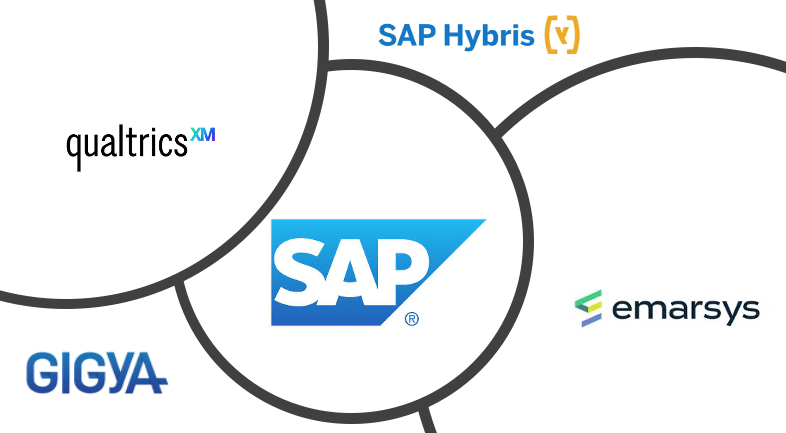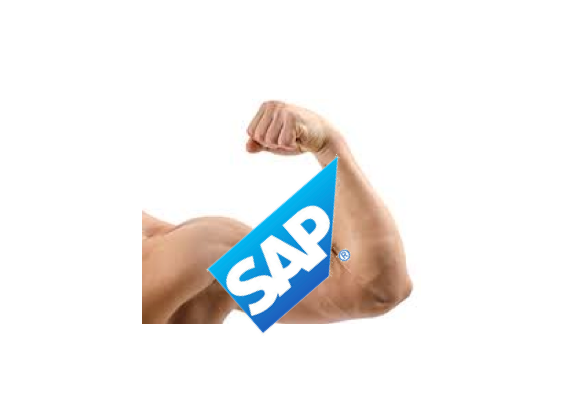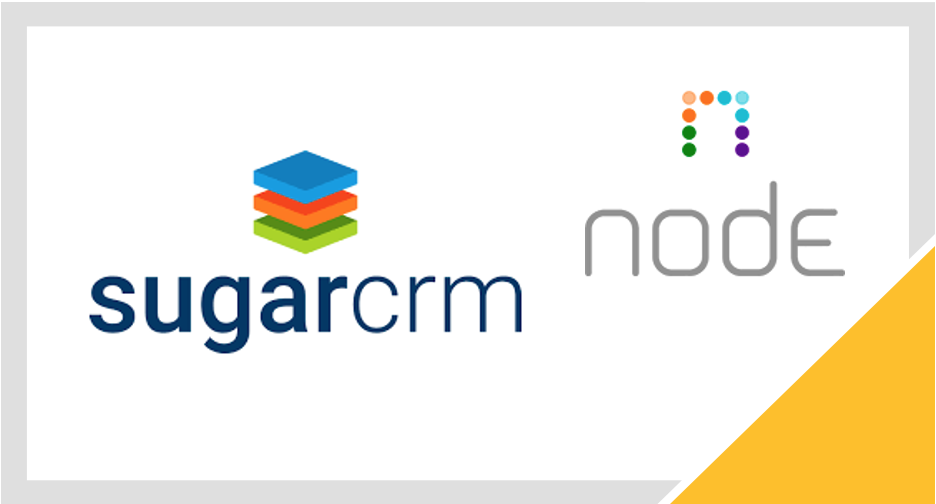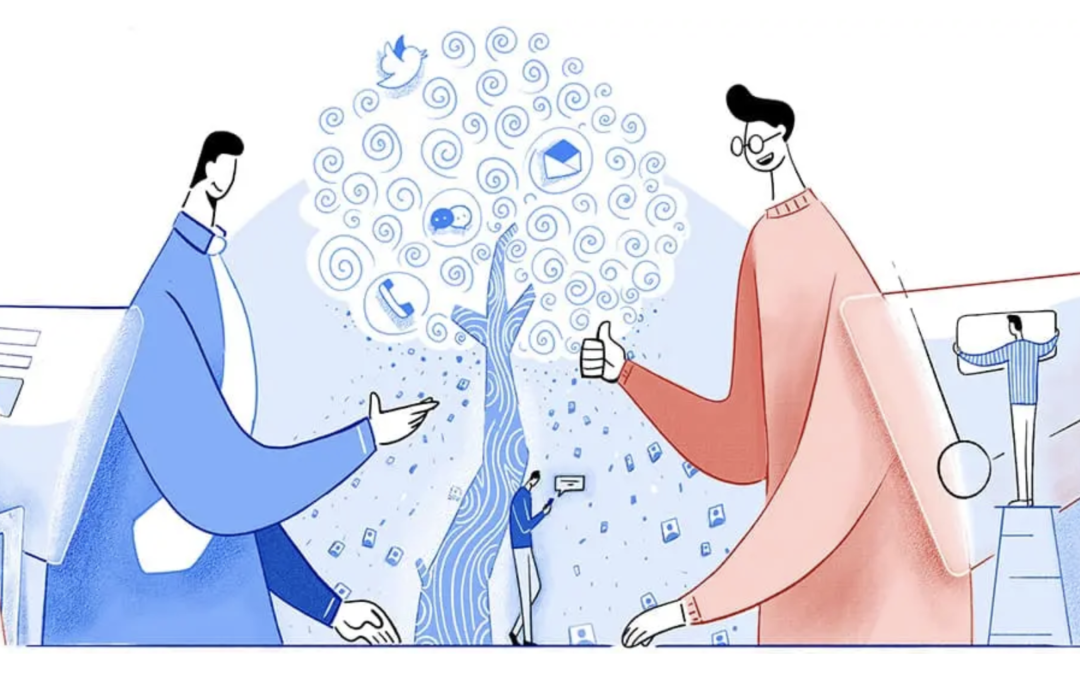
by twieberneit | Oct 6, 2020 | Analysis, Blog |
The News On October 1st, 2020 SAP announced its intent to acquire Emarsys, a leader in the personalization area and omnichannel customer engagement management specialist. The transaction is expected to be completed in Q2/2020 and still subject to regulatory approval. The purchasing price is not disclosed. According to Crunchbase, Emarsys was funded with $55.3M US by Vector Capital in two funding rounds 2015 and 2016. Not being a financial analyst, I would expect a purchasing price of north of $ 500M US. Emarsys positions itself as a customer engagement platform that combines omni-channel automation, personalization, loyalty management and reporting/analytics. The company has more than 1,500 customers, makes about 2/3 of its revenues in the EMEA region and has a pretty strong partner network including technology and agency partners. Key commerce integrations include Adobe (Magento), Salesforce, Shopify and, of course SAP Commerce. On top of this, the platform brings prebuilt industry specific use cases and analytics into the fold. According to Christian Klein, CEO SAP, “once the transaction closes, SAP will enable brands to connect every part of their business to the customer, including experience data. We will deliver a portfolio for a ‘commerce anywhere’ strategy allowing for hyperpersonalized digital commerce experiences across all channels at any time”. Bob Stutz, president SAP Customer Experience, adds that “with Emarsys technology, SAP Customer Experience solutions can link commerce signals with the back office and activate the preferred channel of the customer with a relevant and consistently personalized message, allowing customers the freedom to choose their own engagement”. The bigger Picture The ability to segment in real time becomes more and more important,...

by twieberneit | Sep 27, 2020 | Blog |
Earlier this year, a few days after attending SAP Sapphire reimagined, I asked Quo Vadis, SAP. At that time industry legend Bob Stutz led the CX group already for 8 months, with Esteban Kolsky being his chief of strategy. At this event there was hardly any mention of SAP CX. This is in spite of the CRM market being the fastest growing enterprise software market and in contrast to then CEO Bill McDermott’s bold statements that SAP will take Salesforce heads on. Esteban meanwhile changed his role and has become Head of Product, Customer Service and Sales for the SAP CX unit, which indicates that there is an emphasis on execution. And then, there was the announcement that Qualtrics, the company that basically defined the experience management market and that SAP acquired barely two years ago, will be brought public. So, something is happening. But still, there is no word about a strategy or a vision besides a few hints that Bob and Esteban gave during various webcasts or a blog post, in which Esteban gave a glimpse at what he sees as the next generation CRM. It should not surprise you that his thoughts have to do with platform, as the overall market for business applications, and especially the market for customer experience, has morphed into a platform market. This void of communicated strategy was supposed to be filled in early May. This communication was cancelled in the wake of Jennifer Morgan leaving SAP and Christian Klein becoming the sole CEO. This void shall be closed soon, after it lasted far too long. This indicates some alignment challenges...

by twieberneit | Aug 25, 2020 | Analysis, Blog |
The News On Monday, August 24th, 2020 SugarCRM announced the acquisition of node.io. I had the pleasure to get pre-briefed by Craig Charlton, CEO SugarCRM and Rich Green, Chief Product Officer and CTO SugarCRM about this topic. Node was founded in 2014 with significant expertise, including ex-Google personnel and he creator of the Alta-Vista search engine. According to Crunchbase, the company has acquired $43.5M US to innovate around AI as a service. The company applies deep learning to help organizations make better predictions and decisions that impact their bottom line and focuses on delivering accurate predictions even with minimum CRM data. It does this by taking advantage of large data sets that it acquired or has free access to, including company and available business related personal information. That way, it is possible to hand over only a limited amount of SugarCRM data to Node in order to achieve accurate predictions. Instead, the prediction engine runs almost exclusively on Node data. According to Charlton and Green, SugarCRM itself also does not see any personally identifiable data (PII) but only meta data out of the Node system. One core idea behind the acquisition is that superior business outcomes need a combination of internal and external data. As Paul Greenberg gets quoted in the press release “now more than ever it is critical to leverage all available data and signals to work towards better outcomes for both customers and the business alike”. SugarCRM compares the result of combining CRM data with the data and intelligence provided by Node to the switch from a low fidelity to a high definition view on the...

by twieberneit | Jul 7, 2020 | Analysis, Blog |
The news It is reporting season – and I am actually already somewhat late to have a look at Salesforce’s Q1 figures of fiscal year 20/21 and to think about some implications. The earnings presentation makes for an interesting overview, more details are in the quarterly filing, the earnings release, and the transcript of the earnings webcast. So, let’s get into it and look at some figures, concentrating on the company overview, result highlights, revenue and margin developments, revenues by cloud and region. Right on the first content page Salesforce states that it Is #1 CRM software provider worldwide Consistently delivers durable revenue growth Is the fastest growing top five enterprise software company Is uniquely positioned to help customer drive broad-based digital transformation Revenue is up 31 per cent (at constant currency) to nearly $4.9 billion for this quarter, which is slightly below the Q4/FY20 guidance. Operating cash flow shrank slightly to $1.86 billion year over year. The company adjusted the revenue guidance from $21 – $21.1 billion as per the Q4/FY20 down to $20 billion. GAAP earnings per share are adjusted to ($0.06) to ($0.04) from $0.12 to $0.14. Growth of FY21 operating cash flow is adjusted to 10 – 11 per cent from 20 per cent. GAAP operating margin went down by 8.5 per cent points to a negative 2.9 per cent with the non GAAP operating margin going down by 5.1 per cent points to 13.1 per cent. On the revenue distribution frontier it shows that Salesforce’s growth happens in the ‘Sales Platform & Other’ category, which vastly outpaces the other clouds already since Q4 last...

by twieberneit | May 20, 2020 | Blog, Webinar |
Many analysts, including myself, have repeatedly written about us having entered a new normal, which is enforced by a so-called green swan event – an event that according to BIS is “extremely [financially] disruptive and that could be behind a systemic [financial] crisis” (brackets set by Thomas Wieberneit). Supply chains are broken, employees need to work from home, stores were forced to close for prolonged times, and so on. This has the potential to seriously harm the base function of a business, which is helping their customers solve their problems. Looking at the pyramid of customer expectations, businesses are often barely, if at all, able to maintain its lowest level – the level of effectivity – and are far away from making it easy for their customers or even providing them with a joyful experience when interacting and engaging with them. Figure 1: The hierarchy of customer expectations Yet, we are in an era where products and services themselves get increasingly deprecated and the experience becomes the main distinguishing factor for continued success. Still not all organizations are set up to deal with this. Most are not resilient enough to fend off or at least mitigate the disruption caused by a crisis. Some organizations are affected more than others. So are the people who work in these organizations. Salespeople cannot interact with their customers in the ‘usual’ way anymore. They cannot go out and visit them currently. Customer service professionals need to change their ways of collaboration with their colleagues, they cannot just ask their neighbour anymore. Marketing Teams cannot create and host offline events due to distance and...






